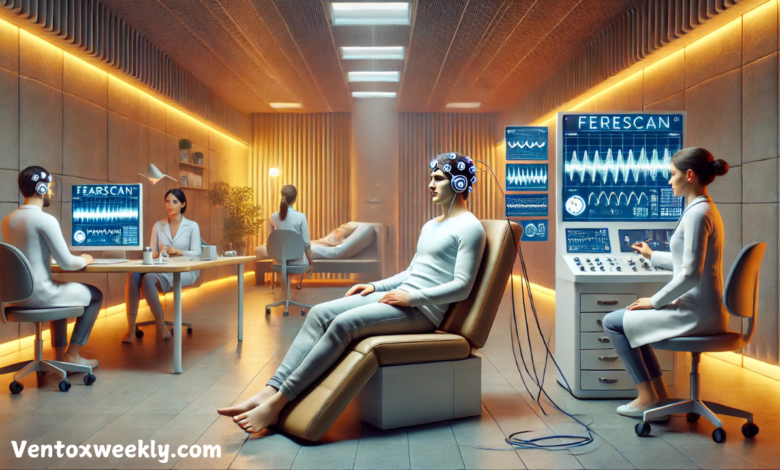FearScans: A Revolutionary Approach to Emotional Health

In the ever-evolving landscape of psychological assessments, a groundbreaking technology emerges: FearScans. This innovative approach revolutionizes understanding and managing fear and enhances the precision of emotional health diagnostics and therapy. FearScans employ advanced imaging and biometric technologies to quantify fear responses in real time, offering a more objective and detailed understanding than traditional methods. This comprehensive exploration of FearScans will explore their mechanism, applications, and potential impacts on various sectors.
What are FearScans?
FearScans are sophisticated diagnostic tools that measure and analyze fear by capturing physiological indicators such as heart rate, skin conductivity, brain activity, and more. Unlike traditional psychological assessments that rely heavily on subjective self-reporting, FearScans provide an objective and quantitative measure of fear, which can be crucial in accurately diagnosing and treating conditions like anxiety disorders, phobias, and post-traumatic stress disorder (PTSD).
How Do FearScans Work?
The technology behind FearScans integrates several components:
- Biometric Sensors: These devices measure physiological responses like heart rate fluctuations, changes in skin conductivity, and other stress indicators.
- Neuroimaging Techniques: Tools such as fMRI or EEG are used to observe brain activity and understand how fear is processed neurologically.
- Artificial Intelligence (AI): AI algorithms analyze the data collected to identify patterns of fear and stress responses, providing previously inaccessible insights.
The Science Behind FearScans
Developed from extensive neuroscience and clinical psychology research, FearScans utilizes data from multiple biometric sources to thoroughly picture a person’s emotional state. By correlating these physiological markers with known fear response models, the scans can accurately assess a person’s intensity and triggers of fear.
Applications of FearScans
In Clinical Settings
Therapists and psychologists use FearScans to understand their patients’ conditions better, allowing them to create more effective, personalized treatment plans. The scans are beneficial in the following ways:
- Diagnosing Anxiety Disorders: By providing precise, objective data on fear responses, therapists can more accurately diagnose various anxiety-related conditions.
- Monitoring Treatment Progress: Real-time data from FearScans can help therapists adjust treatments as needed, enhancing therapeutic outcomes.
In Personal Development
Individuals seeking to manage their emotional well-being can benefit from FearScans by gaining deeper insights into their fear triggers and stress reactions. This knowledge can empower them to develop targeted strategies for managing their fears and improving their mental health.
In Research
Researchers utilize FearScans to study fear responses in a controlled, measurable way, leading to advancements in psychological theories and therapies. The precise data generated by these scans facilitates groundbreaking research in emotional health.
The Benefits of FearScans
The advantages of FearScans are manifold:
- Objective Assessment: They provide a measurable, unbiased view of emotional responses, a significant advancement over subjective assessments.
- Enhanced Personalization: The detailed data from FearScans allows for tailored therapeutic approaches, significantly improving treatment efficacy.
- Innovative Research Tool: As a research tool, FearScans offers new insights into the physiological and psychological aspects of fear, contributing to the scientific understanding of emotional health.
Ethical and Privacy Considerations
Despite their benefits, implementing FearScans raises essential ethical and privacy concerns. Collecting and analyzing biometric and neurological Strict confidentiality and permission processes must be followed when handling data to protect individuals’ privacy. Furthermore, the potential for misuse of such sensitive data necessitates robust ethical guidelines and regulations to ensure that FearScans are used responsibly.
Challenges and Future Directions
The adoption of FearScans faces several challenges, including standardized procedures necessary to guarantee uniformity and reliability across different settings. Additionally, as the technology advances, ongoing research will be crucial in refining its accuracy and applicability.
Looking ahead, integrating FearScans with wearable technology and mobile apps could provide continuous monitoring of emotional states, offering real-time insights and interventions. This could revolutionize not only clinical practices but also everyday personal health management.
Conclusion
FearScans represent a significant technological advancement in emotional health diagnostics and management. By providing a clear, objective, and detailed assessment of fear responses, they hold the potential to transform therapeutic practices, enhance personal well-being, and drive forward academic research. As we embrace this technology, addressing the associated ethical and privacy concerns is imperative to realize the benefits of FearScans responsibly and effectively. With continued innovation and careful consideration of their implications, FearScans are poised to be an integral part of the future of psychological health and well-being.
Frequently Asked Questions About FearScans
What is a FearScan?
A FearScan is an advanced diagnostic tool that utilizes biometric sensors and neuroimaging techniques to objectively measure and analyze fear responses. This technology captures physiological indicators like heart rate, skin conductivity, and brain activity to provide a detailed understanding of an individual’s fear levels.
How does a FearScan work?
FearScans uses biometric sensors to track physical signs of fear, artificial intelligence to analyze collected data, and neuroimaging techniques such as fMRI or EEG to observe fear-related brain activity. This integration enables a thorough examination of how fear affects a person physically and psychologically.
Are FearScans safe?
Yes, FearScans are designed to be non-invasive and safe. They utilize external sensors to measure physiological responses without causing harm or discomfort to the individual.
Can FearScans be used on children?
FearScans can be adapted for children and adolescents, providing valuable insights into their emotional health, which can facilitate early intervention and support in managing fear-related issues.
What kind of data do FearScans collect?
FearScans collect various types of data, including physiological metrics (like heart rate and skin conductance), neurological data (from brain imaging), and behavioral indicators (such as changes in speech or body language).




